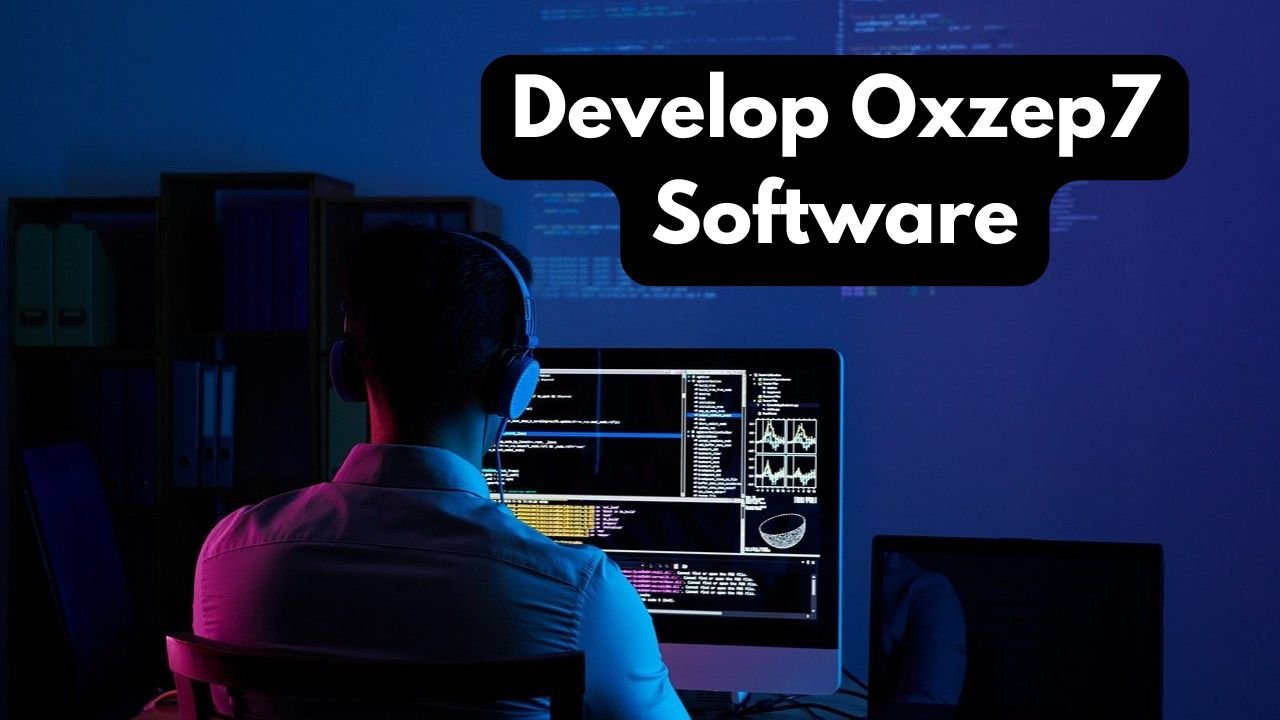Develop Oxzep7 Software software involves a meticulous process that integrates advanced features, modern development methodologies, and robust testing mechanisms. This guide provides an in-depth look into the development lifecycle of Oxzep7, highlighting its key features, development strategies, and best practices.l
Understanding Develop Oxzep7 Software
Develop Oxzep7 Software is a sophisticated software platform designed to facilitate advanced data acquisition and analysis. It offers a range of features tailored for engineers and researchers, including modal testing, saturation monitoring, and transducer data management.
Key Features of Oxzep7
- Modal Testing: Enables the determination of modal parameters such as natural frequencies and mode shapes of devices under test (DUTs).
- Saturation Meter: Provides real-time monitoring of analog channel saturation levels, aiding in the prevention of data overload.
- TEDS Editor: Allows for the editing of Transducer Electronic Data Sheet (TEDS) information, facilitating sensor calibration and configuration.
- Screen Templates for Power Analysis: Offers predefined templates to streamline power group analysis and visualization.
- SCPI Trigger Settings: Supports editing and querying of trigger settings via Standard Commands for Programmable Instruments (SCPI), enhancing automation capabilities.
Feature Overview Table
| Feature | Description | Benefits |
| Modal Testing | Analyzes dynamic behavior of structures | Accurate determination of modal parameters |
| Saturation Meter | Monitors analog channel saturation levels in real-time | Prevents data overload and loss |
| TEDS Editor | Manages sensor-specific data for calibration | Ensures accurate sensor configuration |
| SCPI Trigger Settings | Allows remote configuration via SCPI commands | Facilitates automation and remote control |
| User Interface Enhancements | Includes drag-and-drop, dark mode, and instrument categorization | Improves usability and user experience |
| Performance Optimizations | Reduces I/O delays and enhances data handling efficiency | Ensures real-time data processing |
Development Lifecycle of Develop Oxzep7 Software
The development of Oxzep7 follows a structured Software Development Life Cycle (SDLC), ensuring systematic progress from conception to deployment.
1. Requirement Analysis
This initial phase involves gathering and analyzing the specific needs of end-users and stakeholders. Understanding the requirements ensures that the software aligns with user expectations and industry standards.
2. System Design
Based on the requirements, the system architecture is designed. This includes defining the software’s modules, interfaces, and data flow, ensuring scalability and maintainability.
3. Implementation
Developers begin coding the software modules using appropriate programming languages and frameworks. For Oxzep7, languages like C++ and Python may be utilized, given their performance and versatility.
4. Testing
Comprehensive testing is conducted to identify and rectify defects. This includes unit testing, integration testing, system testing, and user acceptance testing, ensuring the software’s reliability and performance.
5. Deployment
After successful testing, the software is deployed to the production environment. Deployment strategies may include phased rollouts or full-scale launches, depending on the project’s scope.
6. Maintenance
Post-deployment, the software undergoes regular maintenance to address any issues, implement updates, and incorporate user feedback, ensuring its longevity and relevance.
Integration of Advanced Features
Oxzep7’s advanced features are integrated to enhance its functionality and user experience.
Modal Testing Module
The modal testing module is designed to analyze the dynamic behavior of structures. It supports both Single Input Single Output (SISO) and Single Input Multiple Output (SIMO) configurations, providing flexibility in testing scenarios.
Saturation Monitoring
The saturation meter offers real-time visualization of channel saturation levels, aiding in the early detection of potential data acquisition issues. Customizable settings allow users to tailor the monitoring to specific needs.
TEDS Management
The integrated TEDS editor enables users to read and write sensor-specific data, streamlining the calibration process and ensuring accurate data collection.
User Interface and Usability Enhancements
A user-friendly interface is crucial for effective software utilization. Develop Oxzep7 Software incorporates several UI enhancements to improve usability.
- Drag-and-Drop Channel Management: Users can easily rearrange channels within instruments, facilitating customized data views.
- Dark Mode: A dark theme option reduces eye strain and enhances visual comfort during extended use.
- Instrument Categorization: The instruments menu is organized into categories, allowing users to quickly locate and access desired tools.
Automation and Remote Control
Develop Oxzep7 Software supports automation through SCPI commands, enabling remote configuration and control. This feature is particularly beneficial for integrating the software into automated testing environments.
Performance Optimization
To ensure optimal performance, Develop Oxzep7 Software includes several enhancements:
- Reduced I/O Delay: Improvements in EtherCAT communication have decreased input/output delays, enhancing real-time data processing.
- Efficient Data Handling: Updates to data decoding processes allow for seamless reloading and updating of signal configurations.
Licensing and Updates
Oxzep7 operates under a licensing model that may require additional purchases for major updates or optional features. Users should consult the licensing terms to understand the costs associated with upgrades and feature additions.
Conclusion
Develop Oxzep7 Software entails a comprehensive approach that integrates advanced features, user-centric design, and robust performance optimizations. By adhering to a structured development lifecycle and focusing on user needs, Oxzep7 stands as a powerful tool for data acquisition and analysis.
Read Our More Blogs:-



